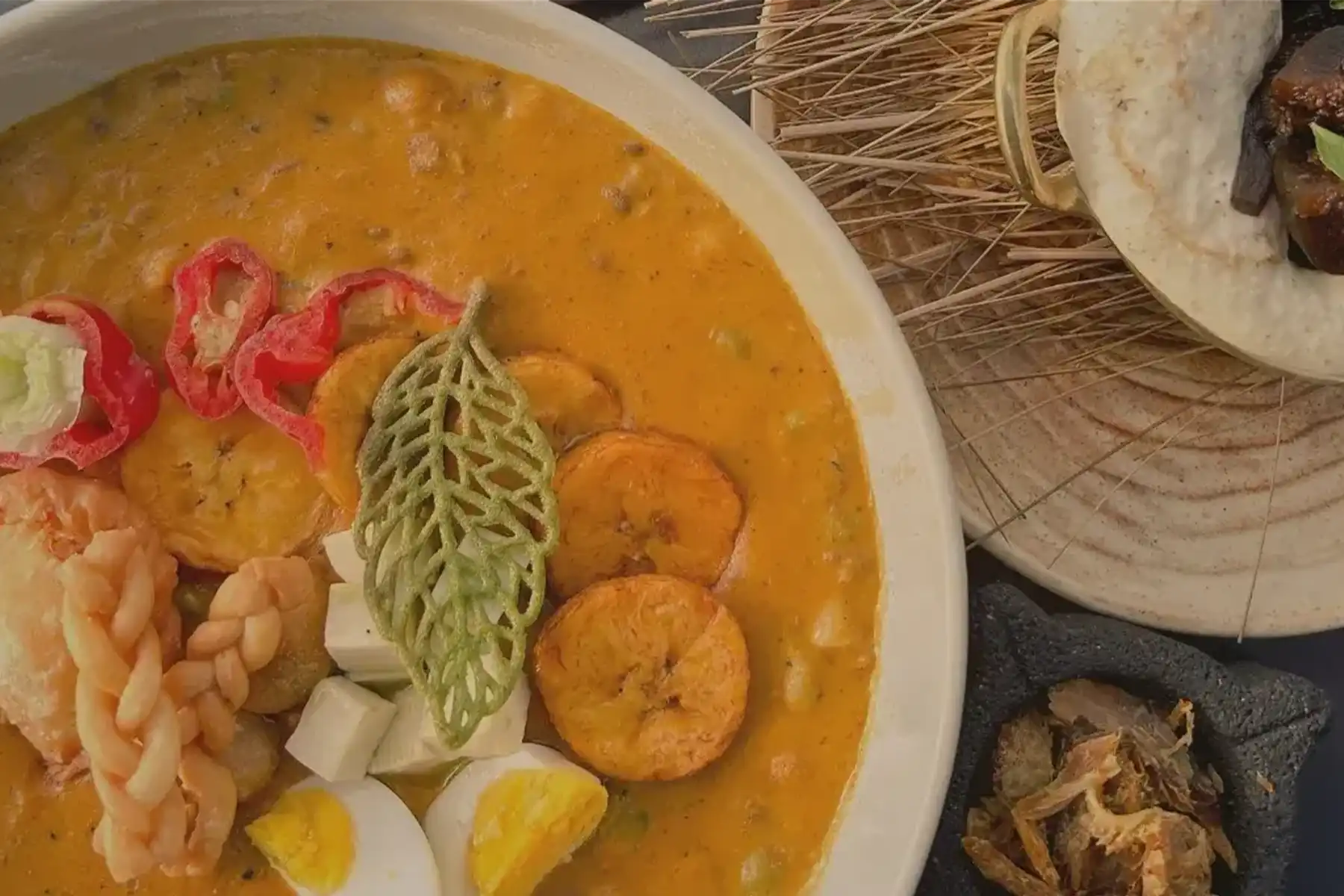Everything you didn’t know about fanesca
1. Preparation time
Peeling each grain by hand, cooking each ingredient to perfection, and preparing the accompaniments takes time, the ingredients must be blended multiple times until achieving a thick and robust mustard-colored texture. Traditionally, creating fanesca was an uphill task that required meticulousness and could take approximately 12 hours. On Easter Day, the ingredients are sold in markets and supermarkets peeled, chopped, and in exact quantities to simplify their preparation.
2. Religious origins
During Easter Day, abstaining from red meat is considered a symbol of sacrifice and renunciation, recalling the sacrifice of Jesus Christ on the cross. During the period of evangelization, the Spanish combined Catholic symbols and beliefs with indigenous elements as a strategy to achieve cultural mestizaje. Did you know that early Christians used the fish as a secret symbol to identify themselves? Therefore, the early representations of Christ had the fish as a symbol. In the fanesca, cod represents Jesus Christ, being an alternative during Lent and Easter Day, symbolizing spiritual preparation for the celebration.
3. Antiquity
Fanesca evolved in flavor and texture. In the cuisine, recipes and culinary practices merged during colonization to create new and unique dishes. In the past, wild guinea pig meat accompanied fanesca. With the arrival of the Spanish, they introduced cod, an important food source for the colonizers due to its long-term preservation capability, making it ideal for lengthy transatlantic journeys.

4. A misrepresented history
Contrary to popular belief, fanesca was not a tradition created by the Spanish. It existed before becoming a religious tradition, being considered a celebration that reflected the deep connection of indigenous peoples with the land and cosmos in the so-called ‘Mushuc Nina.’ These ceremonies included offerings, dances, and other communal activities. This ritual evoked the time of flourishing and rebirth through the sun as an energy provider for the community and signaled the beginning of the new Andean year. Ecuadorian fanesca represented respect for balance and harmony with nature, which later, with colonization, became the well-known religious tradition of Easter Day.
5. Symbolism of “chocho” beans in fanesca
In the ancient tale, it is said that when Jesus was fleeing from being assassinated, he hid in chocho plants, which opened up, revealing him. Jesus punished them with their bitter taste, characteristic of the grain. Traditionally, chochos represented one of his disciples, Judas Iscariot, the disciple known for betraying Jesus and delivering him to his death. Therefore, before using this ingredient in fanesca, the chochos had to be purified for seven days in stream water.
6. The conquerors
During colonization, the Spanish brought new ingredients such as cod, milk, wheat flour, rice, and onions; they complimented the recipe for the fanesca and modified the dish’s preparation technique, which was influenced by Spanish culinary practices. Combined with these indigenous and European elements, they created an explosion of unknown flavors and textures, complemented by their accompaniments to create a smooth sensation of flavors that melt on the palate.
7. Tradition that changes
The fanesca recipe’s exact origin is still being determined, but it was already mentioned in the first printed cookbook in Quito in 1882. Some countless sauces and pickles accompany the dish, many of which were created in antiquity, with recipes passed down from generation to generation, from mothers to children. That’s why there is no single fanesca recipe; there are endless variations throughout the country. And there are thousands of adaptations if we talk about city to city and from family to family.
8. Easter Day in Quito
Once a year, on Easter Day in Quito -one of Ecuador’s most important tourist destinations- is filled with people dressed in traditional purple attire. Men and women walk barefoot in silence through the cobblestone streets of Quito. In the UNESCO World Heritage Site, hundreds of people gather during this time, covering their faces with pointed hoods while others sing and pray around them.
9. The cross on the plate
Before serving the fanesca, many families would decorate a cross made of ash on the top of the plate. Ecuadorians not only incorporated a symbolic element related to Lent but also emphasized the spiritual and religious connection of the dish with the celebration of Easter Day and the resurrection of Jesus Christ on Easter.
10. One of the best fanesca’s in Quito of 2024
Traditions are not only a part of who we are but also of those who came before us. Fanesca, an emblematic dish of Ecuadorian cuisine, is a clear example of how indigenous culinary traditions have merged with later influences to create something unique and significant. This dish is not just a delicious soup but also a cultural and religious symbol that reflects the diversity and history of Ecuador.

According to Quito Tourism, 2024, a contest directed by culinary experts, one of the best fanesca recipes in the hotel category is created on GO Quito Hotel. It’s part of the gastronomic tourist guide of Quito that you can’t miss. Would you like to know their recipe? Immerse yourself in the flavors and aromas of this traditional dish, which combines a variety of grains, legumes, fish, and spices, carefully prepared to create an unforgettable gastronomic experience. Discover how this iconic dish is made and enjoy an accurate sample of the rich culinary culture of Ecuador!.


